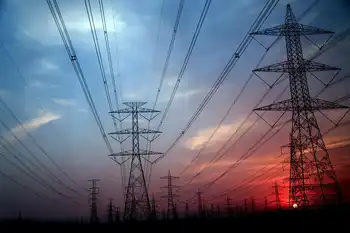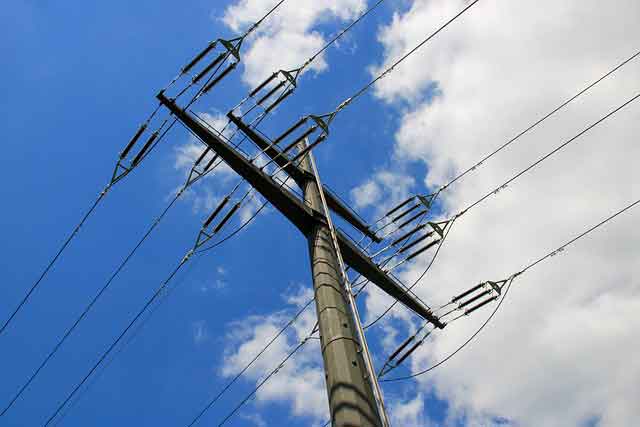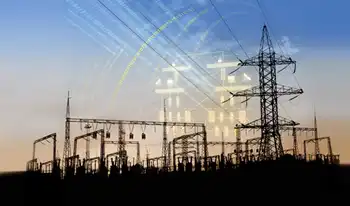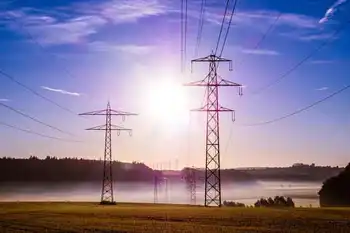IBM to help build broadband network in power lines
By Associated Press
High Voltage Maintenance Training Online
Our customized live online or in‑person group training can be delivered to your staff at your location.

- Live Online
- 12 hours Instructor-led
- Group Training Available
The technology has been around for decades, but most efforts to implement the idea on a broad scale have failed to live up to expectations.
Now, with somewhat scaled-back goals, improved technology, and a dose of low-interest federal loans, IBM is partnering with a small newcomer called International Broadband Electric Communications Inc. to try to make the idea work in rural communities that don't have other broadband options.
Their strategy is to sign up electric cooperatives that provide power to sparsely populated areas across the eastern United States. Rather than compete toe-to-toe with large, entrenched cable or DSL providers, International Broadband is looking for customers that have been largely left out of the shift to high-speed Internet.
Signing on IBM, perhaps the highest-profile company to buy into the idea, could juice a technology that has failed to make much of an imprint.
"The technology is important but what's really important is this is a seminal moment in the delivery of broadband services to rural customers," said Bill Moroney, the head of the Utilities Telecom Council, an industry trade group. "Here's a beginning and really a great leap forward."
That's a claim likely to be met with some skepticism. Other companies touting broadband access over power lines and through wall outlets have come and gone, dogged by technical hurdles and opposition from amateur radio operators who said the technology interfered with their signals.
In the most recent case, a Dallas utility that planned to provide broadband access to 2 million customers on its power grid decided to shelve the idea in May. Instead the company, Oncor Electric Delivery Co., said it would use the equipment only to monitor the grid.
Federal Communications Commission statistics for 2006, the most recent year available, showed that fewer than 5,000 customers in the U.S. had broadband access through power lines.
IBM and International Broadband say their approach has a better shot.
Neither see big utility companies ever adopting broadband over power lines, which struggles to match the speed of phone or cable lines.
"Broadband service by any of the major utilities doesn't make sense," said Ray Blair, IBM's head of advanced networking. "It will never be able to compete head on."
But in rural areas, where other broadband providers can't afford to build infrastructure, Blair said the technology has come far enough in the past few years to make the power line model economical.
Progress has been slow going, he said, because the technology suppliers in the industry are smaller players without large budgets for research and advertising.
The technology involves sending data on the same wires that provide electricity. Every half a mile or so, a device clamped to the line perpetuates the signal. Inside homes, customers plug a modem into any wall outlet and sign on.
But that stream of data has often run into interference with other wireless devices that happen to be nearby. Ham radio operators have been particularly irked, and even sued the FCC over it.
The key innovation introduced in the past few years, Blair said, is the ability to remotely control the devices fixed to power lines. That way it can be told to switch frequency when it meets interference.
IBM has signed a $9.6 million deal with International Broadband to provide and install the equipment. International Broadband Chief Executive Scott Lee said putting the network in place should take about two years and cost as much as $70 million.
The company will have access to 340,000 homes in Alabama, Indiana, Maryland, Pennsylvania, Texas, Virginia, and Wisconsin, about 86 percent of which have no cable or DSL access, Lee said.
Capturing a large segment of that market would be a huge step for International Broadband, which currently provides only about 1,400 customers with broadband, most of them starting in the past year and half.
The basic service will start at $29.95 per month, which provides Internet download speeds of about 256 kilobits per second. That's just a few times faster than dial-up, but higher-end plans will offer up to 3 megabits per second, more comparable with DSL and cable. Also, upload and download speeds are the same over the power line service; upload speeds are generally lower on DSL and cable.
International Broadband has had help along the way from the federal government: Lee said the company has received $70 million in low-interest loans from the Department of Agriculture. Federal officials have seen broadband over power lines as an attractive option for spreading economic development in rural areas.
"Most of these people have broadband at school or at work but when they get home they lose all of those advantages," Lee said. "It's a service that is desperately needed."











